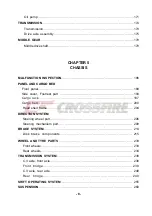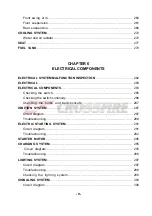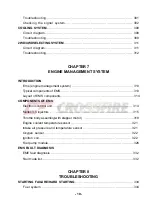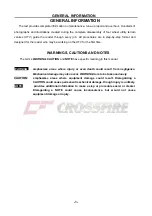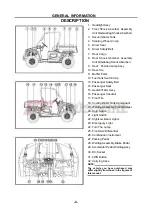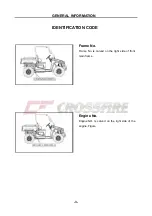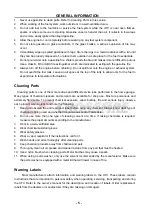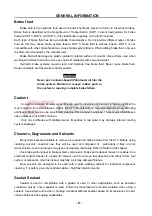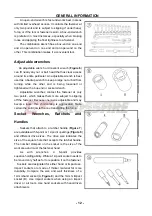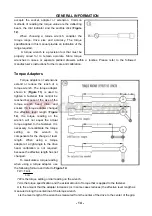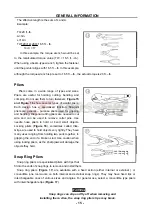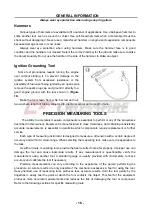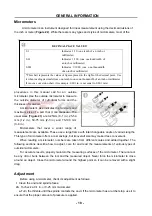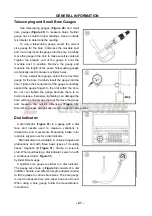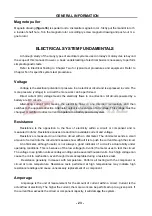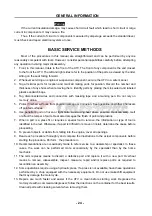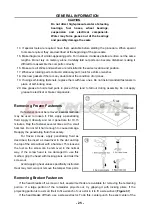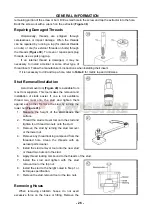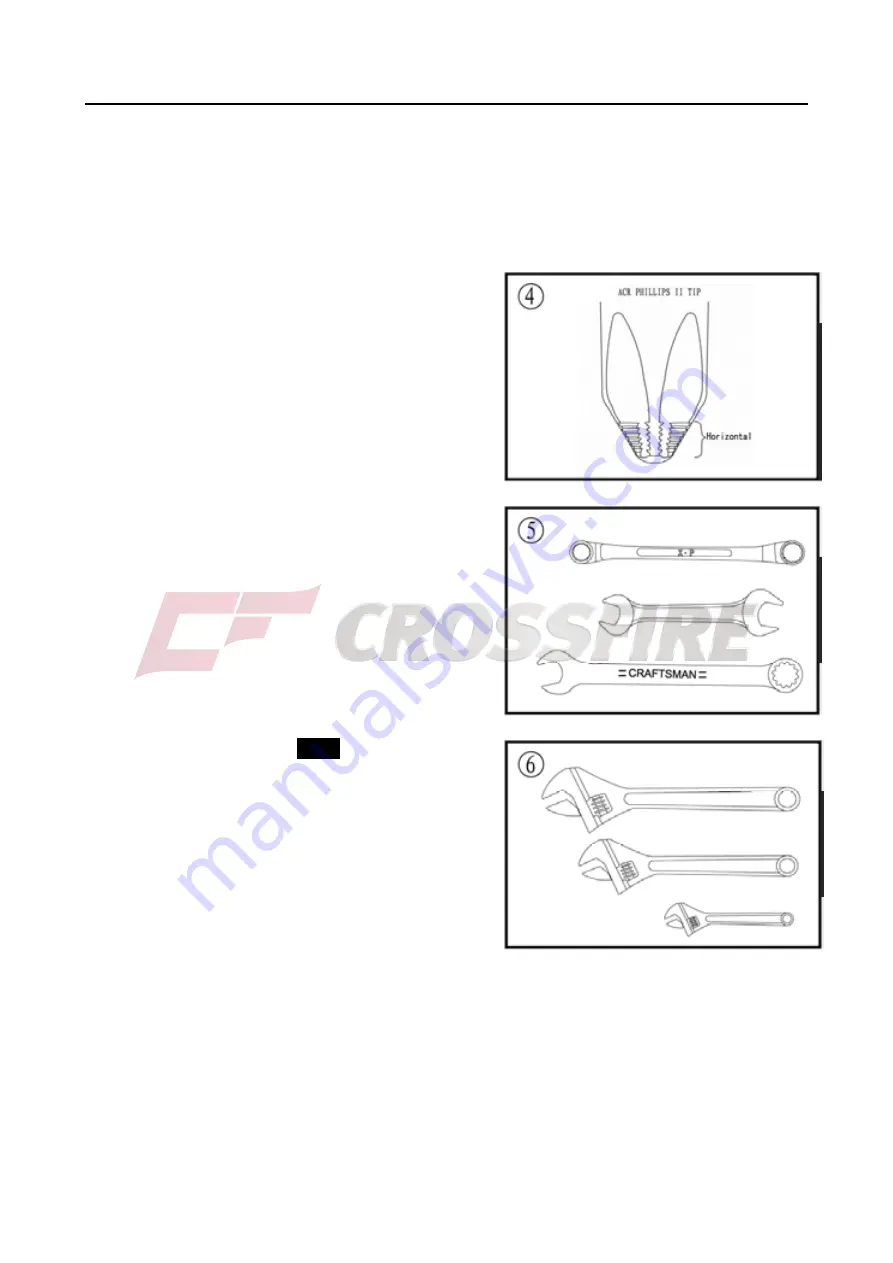
GENERAL INFORMATION
- 11 -
Screwdrivers
Screwdrivers of various lengths and types are mandatory for the simplest tool kit. The two basic
types are the slotted tip (flat blade) and the Phillips tip. These are available in sets that often include an
assortment of tip size and shaft lengths.
As with all tools, use a screwdriver designed for the job. Make sure the size of the fastener. Use
them only for driving screws. Never use a screwdriver for
prying or chiseling metal. Repair or replace worn or
damaged screwdrivers. A worn tip may damage the
fastener, making it difficult to remove.
Phillips-head screws are often damaged by
incorrectly fitting screwdrivers. Quality Phillips
screwdrivers are manufactured with their crosshead tip
machined to Phillips Screw Company specifications.
Poor quality or damaged Phillips screwdrivers can back
out (cam out) and round over the screw head. In addition.
Weak or soft screw materials can make removal difficult.
The best type of screwdriver to use on Phillips
screw is the ACR Phillips II screwdriver, patented by the
horizontal anti-cam out ribs found on the driving faces or
flutes of the screwdriver’s tip (figure 4). ACR Phillips II
screwdrivers were designed as part of a manufacturing
drive system to be used with ACR Phillips II screws, but
they work of tool companies offer ACR Phillips II
screwdrivers in different Tip size and interchangeable
bits to fit screwdriver bit holders.
NOTE
Another way to prevent cam out and to increase
the grip of a Phillips screwdriver is to apply valve
grinding compound or permute screw
&
socket
Gripper onto the screwdriver tip.After
loosening/tightening the screw, clean the screw
recess to prevent engine oil contamination.
Wrenches
Open-end, box-end and combination wrenches (figure 5) are available in a variety of types and
sizes.
The number stamped on the wrench refers to the distance of the fastener head.
The box-end wrench is an excellent tool because it grips the fastener on all sides. This reduces
the chance of the tool slipping. The box-end wrench is designed with either a 6 or 12-point opening.
For stubborn or damaged fasteners, the 6-point provides superior holding because it contacts the
fastener across a wider area at all six edges. For general use, the 12-point works well. It allows the
wrench to be removed and reinstalled without moving the handle over such a wide are.

